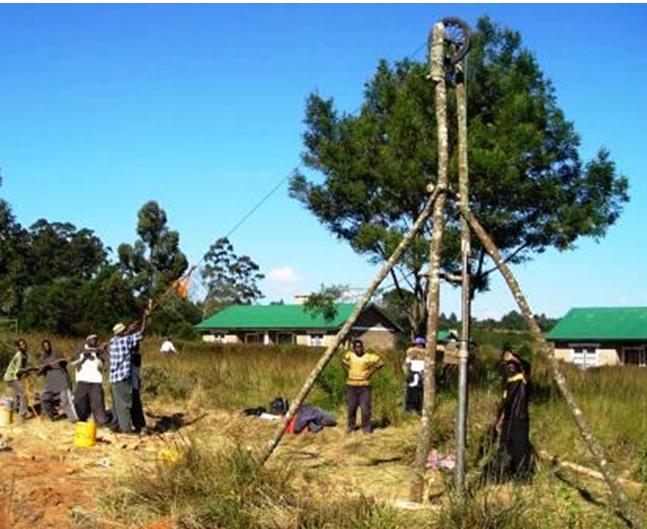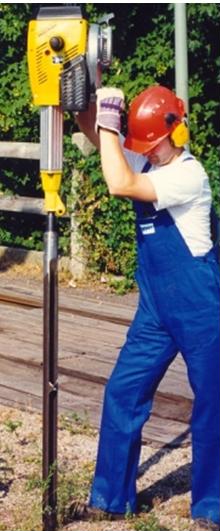Difference between revisions of "Percussion - Stone hammer"
| Line 45: | Line 45: | ||
== Acknowledgements== | == Acknowledgements== | ||
* The basis for the material on this page was obtained from a desk study shortly to be published on the website of the [http://www.practicafoundation.nl/ Practica Foundation], and from the [http://www.rwsn.ch/ Rural Water Supply Network], and specifically its [http://www.rwsn.ch/prarticle.2005-10-25.9856177177/prarticle.2005-10-26.7220595116/prarticle.2005-11-15.6127855822 manual drilling section]. | * The basis for the material on this page was obtained from a desk study shortly to be published on the website of the [http://www.practicafoundation.nl/ Practica Foundation], and from the [http://www.rwsn.ch/ Rural Water Supply Network], and specifically its [http://www.rwsn.ch/prarticle.2005-10-25.9856177177/prarticle.2005-10-26.7220595116/prarticle.2005-11-15.6127855822 manual drilling section]. | ||
| − | |||
| − | |||
Revision as of 06:27, 27 April 2012
| |
The Stone Hammer is a form of percussion drilling, used when boulders or hard clay is encountered. A hollow drill bit is attached to a hammering tool. The hammering tool consists of a heavy weight which moves up and down in a pipe. Once the bit and hammering tool are lowered into the borehole by a cable, the same cable can be used to do the hammering. Lifting and dropping the hammer drives the drill bit down. When 60cm has been drilled, the unit is pulled up to the surface to empty the hollow drill bit. The stone hammer is only successful when boulders are encountered, not in homogeneous or solid stone layers were displacement of the material is not possible.
In western counties the same principle is used with the percussion gouge. As opposed to the stone hammer, the hammering action of the percussion gouge takes place on ground level. The gouge is electrically driven and used to break hard surface layers (rubble) and to take soil samples.
The stone hammer and percussion gouge are not individual drilling methods, but used to supplement other methods when boulders, rubble or hard clay is encountered during drilling. Although it does not penetrate very hard stone such as basalt, it is a tougher option than other options such as the Rota-sludge method or the EMAS method.
History and social context
This technology is being refined further in India and Nicaragua. The Stone-hammer method has won a competition for innovative irrigation technologies organized by the World Bank, Winrock and International Development Enterprises (IDE).
Suitable conditions
Percussion drilling is suitable for unconsolidated and consolidated formations: Sand, silt, stiff clays, sandstone, laterite and gravel layers.
Manual percussion drilling is generally used for tube wells of 2" to 5" diameter up to depths of 25 meters.
| Advantages | Disadvantages/limitations |
|---|---|
| The Stone Hammer can be used in combination with other drilling tools when gravel or a hard layer is encountered | - It is difficult to remove the drill bit after it has been hammered into the formation. - The stone hammer is only successful when larger boulders are not encountered. |
Construction, operations and maintenance
Equipment is commercially produced in western countries. Local production is possible. Percussion drilling is hard work. Use of a small engine may be appropriate.
Costs
The costs are 20-60% less then those of hand dug wells. The cost of introduction are between US$ 15,000 - 30,000 per project, including a production drill set, drawings, hands-on training, and the first wells.
Field experiences
The stone hammer is mainly used in India and Nicaragua, and sometimes in Madagascar. The percussion gouge is mainly used in western countries.
Reference manuals, videos, and links
- Rota-sludge and Stone Hammer drilling, part one: Drilling Manual by Practica Foundation.
- Rota-sludge and Stone Hammer drilling, part two: Production Manual by Practica Foundation.
- Stone hammer info on www.practicafoundation.nl
Acknowledgements
- The basis for the material on this page was obtained from a desk study shortly to be published on the website of the Practica Foundation, and from the Rural Water Supply Network, and specifically its manual drilling section.




